For our vacation this year three friends and I decided to venture into the safari heartlands and visit Tanzania. The trip, as with our Botswana safari in 2012, was organised through Safari Drive. The route would take us from Arusha to Tarangire and north to the Ngorongoro Crater and Ndutu. We would go further north to Serenora and the Moru Kopjes in the Serengeti before returning to Ndutu and finally south to Lake Manyara.
The first step in any holiday of course is getting to your destination. The plan was to fly to Nairobi and then take a short hop to Kilimanjaro. The Kenyan Airways flight however only takes off at 00:40 in the morning – the last flight of the day. I’ve not been at OR Tambo this late in the day, and arriving at just before 10pm, I was only just in time to buy a book before the airport started to close down. One by one , the shops and café’s closed their doors until the airport was quiet except for the few of us silently waiting for the late flight. Already feeling sleepy, I was distressed to learn that the flight was only three and a half hours and therefore not long to sleep. So the next day started at the god-awful Nairobi airport with only one hours’ sleep. I did however meet up with one of my travel companions and we completed our journey to Tanzania together. Our final flight was only fifty minutes and gave views to the right of archetypal conical volcanoes, each topped with a fluffy white cloud. On the left of the plane were the summits of Mount Meru and Kilimanjaro: their peaks rising above the clouds. On landing we met a transfer agent who took us to Ngurdoto Lodge in the shadow of Mount Meru, just outside Arusha. There we met our other two travel companions, collected our Safari Drive land-rover, and enjoyed a relaxing evening catching up. The lodge technically has views of both Meru and Kili, and whilst the former was majestic in the early morning sun, the latter spent the whole of our short stay hiding in cloud. It always amazes me how mountains have this ability to disappear quite so completely.
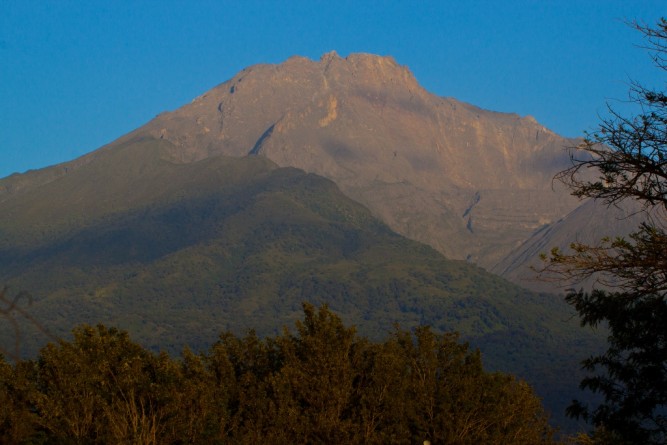
Mount Meru escapes its cloudy covering to tower over Ngurduto Lodge
After a very restful sleep, we drove into Arusha to get supplies for our trip before driving out to Tarangire National Park. We were allocated Kwari Special Campsite, a grassy patch between several baobabs not far from the river in the north of the Park. The trees were home to several colourful bird species including yellow collared-lovebirds and brown parrots (that were in fact green and yellow). We headed straight out on our first game drive of the trip and encountered elephant, dikdik, vervet monkeys, waterbuck, reedbuck and baboon.
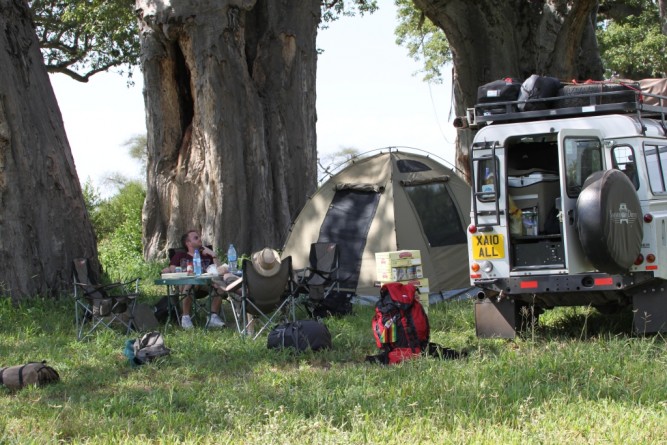
Kwari Special Camp Site nestles amongst bird-filled baobabs
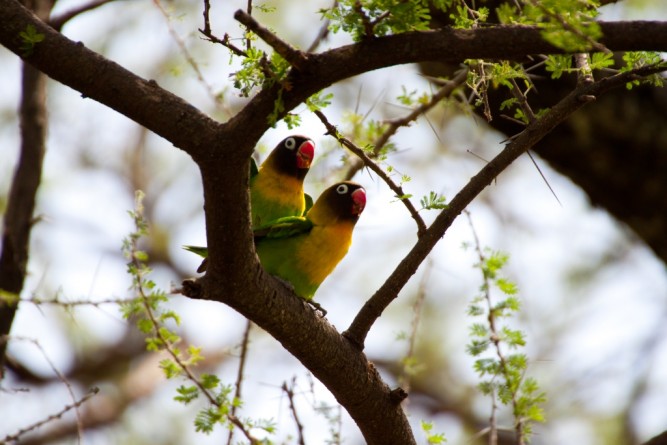
Yellow-collared lovebirds making love
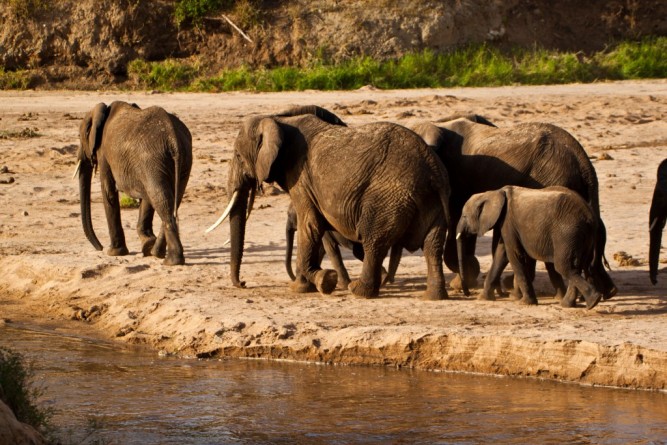
Herds of elephants take follow the river line in Tarangire National Park
When we stopped at a viewpoint over the river for a moment, Ben noticed a number of vehicles on the far side of the river, and near to them something large in a tree that they seemed to be ignoring. We watched a vehicle cross the river from our side towards whatever was going on and quickly headed the same way, holding our breath as we went through the water, something our hire company advised against in our briefing. When we joined the other cars,we immediately saw what had caught their interest. On the left side of the road were three cheetahs; a mother and her near adult cubs. They came towards us before turning tail and heading back along the side of the road. After this, we went to the tree on our right in which Ben had seen something large. Rising from her slumber and spotting the three approaching cheetah was a young lioness. She stood on a thick branch several metres off the ground and watched the smaller cats pass by.
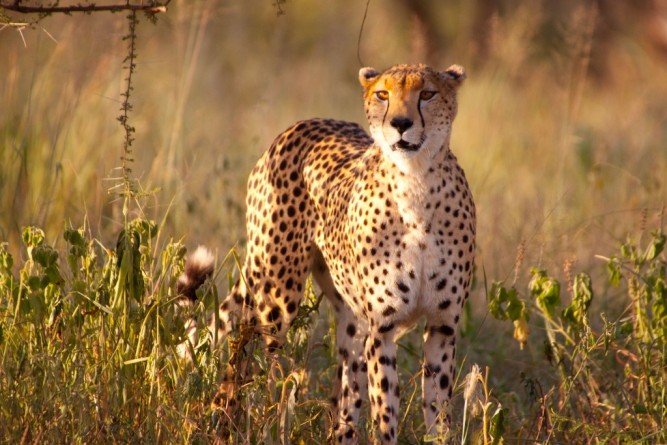
A cautious cheetah surveys the area for danger
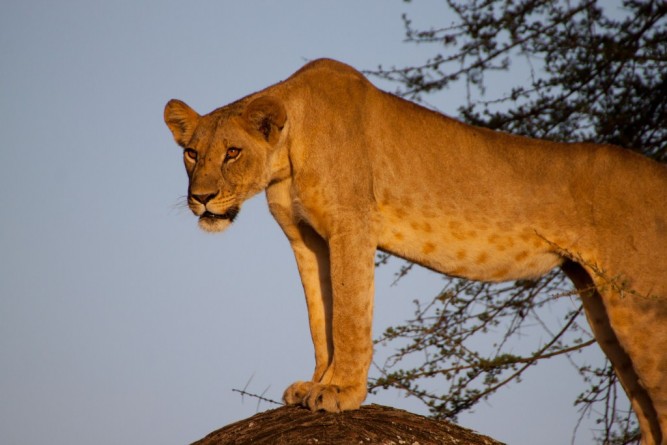
The cheetah family seem oblivious to the threat lurking in the trees
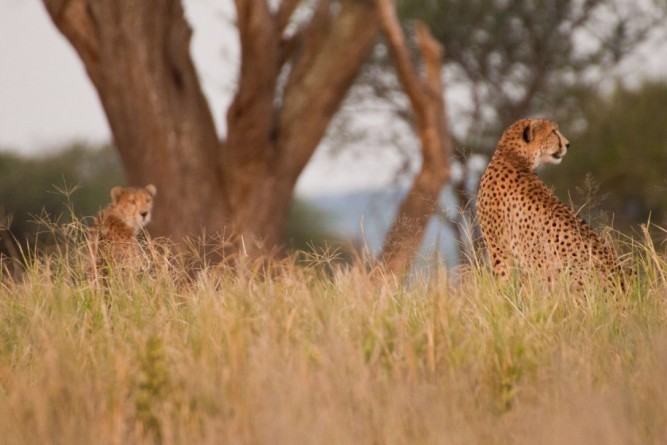
A mother cheetah constantly scans the savannah for threats to her two sub-adult cubs
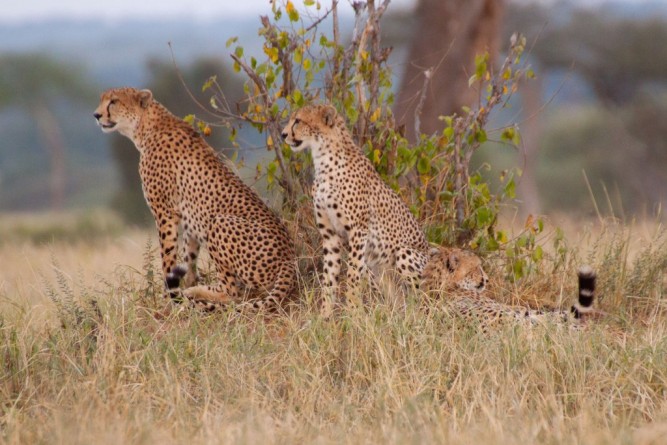
The cheetah family rest together
Darkness began to quickly fall so we headed back to our camp, that was now surrounded by buffalo and elephant, many of which came right up to our tent during the night. The inhabitants of the trees changed shift and bats and a barn owl woke up for their nocturnal activities. As we tried to sleep(whilst wondering if we would be trampled by the herds around us), the whoops of hyena could be heard nearby.
I awoke in darkness to the sound of a lion roaring in the distance. As we headed out into the dawn, a lone hyena and then a jackal were seen returning to their dens after the night’s foraging. We encountered more elephants, a group of banded mongoose, grant’s gazelle and impala on our drive, as well as a (very) large number of tsetse flies – seriously, a lot of them. In between mammal sightings, we enjoyed the diversity of bird life Tarangire has to offer whilst avoiding a tortoise that stepped out of the grass and onto the road.
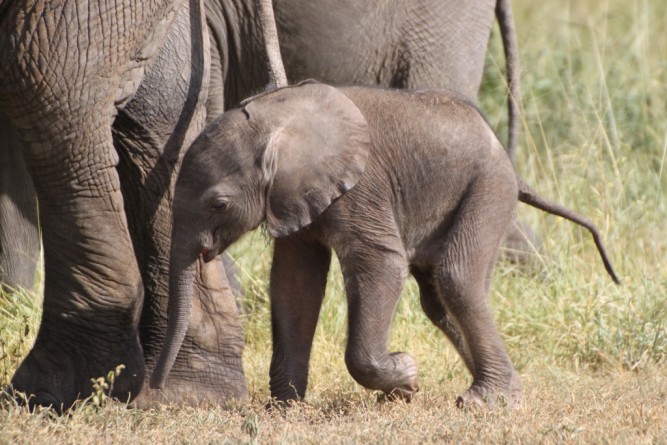
The large herds of Tarangire are growing with many new additions
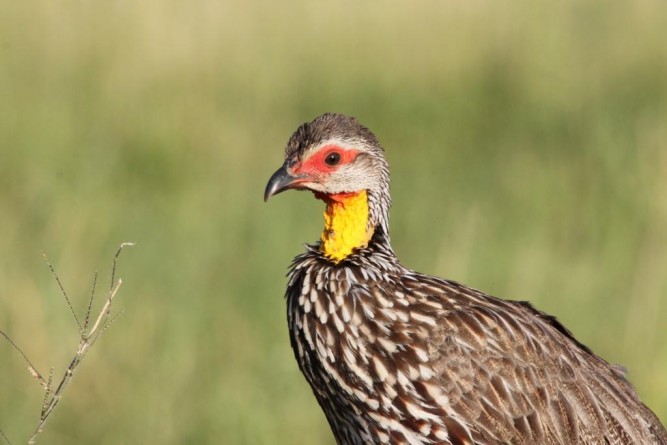
A Yellow-necked Spurfowl shows off its colourful assets in the morning light
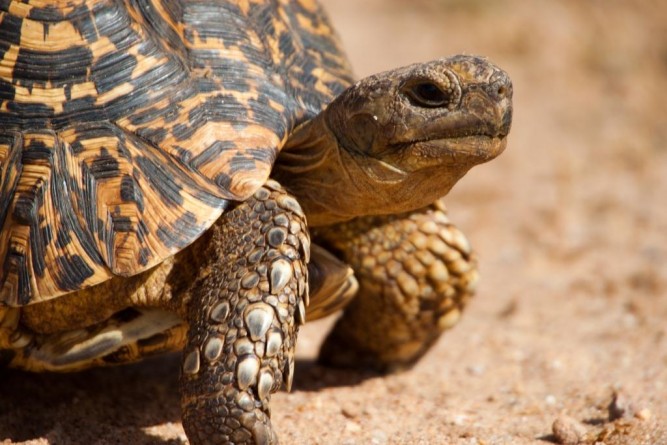
Watch out for tortoises crossing the road!
We stopped for breakfast overlooking a huge marsh, the Silale Swamp along the edge of which a small family of elephant were passing. One of the younger members was chasing the cattle egrets that were following the herd, flapping his ears wildly to make a point. Later the same day we watched a single lioness sleep by the river before coming across a herd of some 1000 buffalo not far from our camp. A small group of bat-eared foxes were beginning their nightly activities as the sun went down on another day.
The following morning, as we drove out of camp ,we were followed by a jackal for quite some time who seemed to have no fear. We continued to Lake Burungi to watch ostrich amongst the grasses along the lake’s edge, also finding secretary birds and waterbuck. A long-crested eagle cut a fine figure in the morning light.
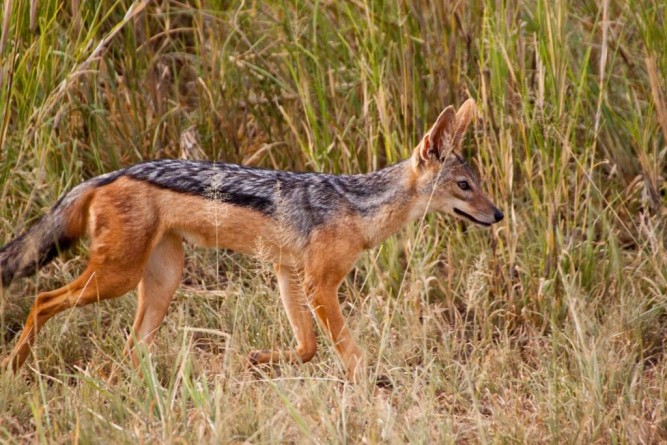
A fearless jackal follows the vehicle
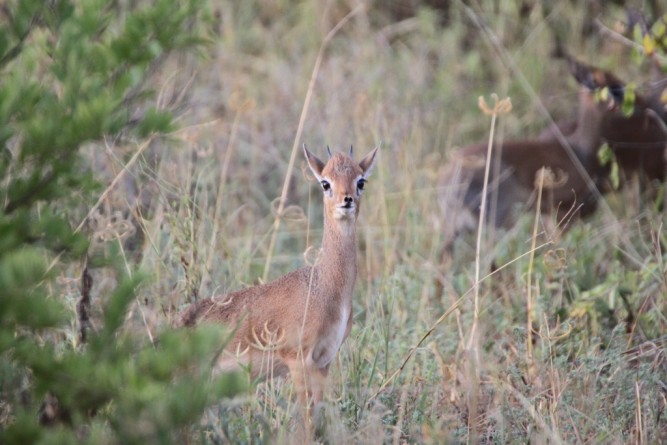
Amongst the grasses you can discover the diminutive Dirk's Dikdik
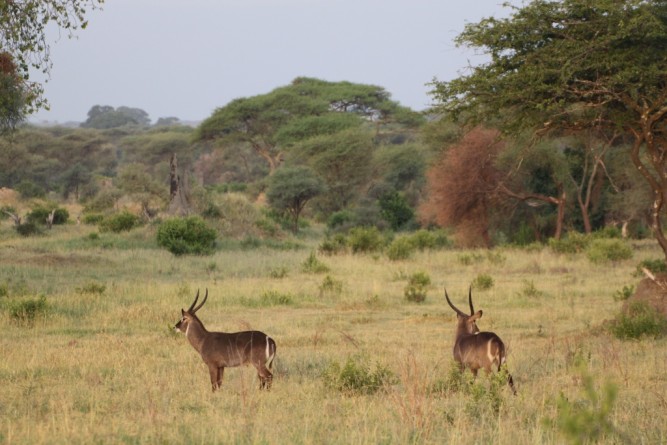
Waterbuck in Tarangire National Park
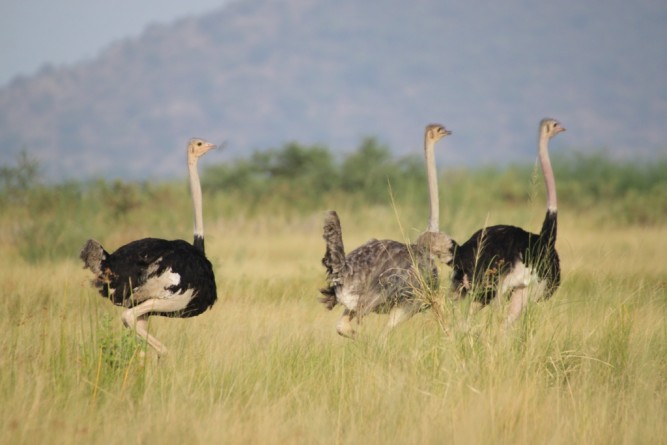
Ostriches patrol the shores of Lake Burungi
But soon it was time to leave Tarangire and its tsetses behind. Ahead of us lay one of the most magical places on earth – the Ngorongoro Crater. As we climbed the steep sides the clouds gathered as hot humid air was pushed up the crater wall. Lush vegetation covered the slopes giving a home to troops of brazen olive baboons that approached vehicles for tidbits. At the crater rim we gazed down on a lush grassland, a large herd of buffalo below us. We carried on around the rim to Simba A camp site, our base for the night. It was cold and windy, but that wasn’t the greatest disturbance. A huge bull elephant had entered camp and was happily sauntering towards our tent, passing by just a few metres away.
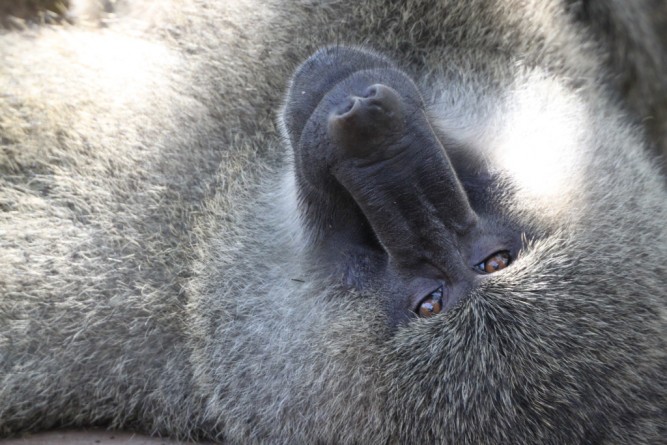
An Olive baboon takes a moment to relax between raiding vehicles for food
Looking for accomodation in Tarangire National Park? Check out Getaway Accomodation.
You may also like
Related Posts
Millions of migrating wildebeest, magical sunsets, incredible wildlife photography and wide open skies make the...
read more
Plan your next local nature escape now. These off-the-grid campsites are serious about reducing your...
read more
For the first time in 150 years, a group of 28 elephants will roam again...
read more